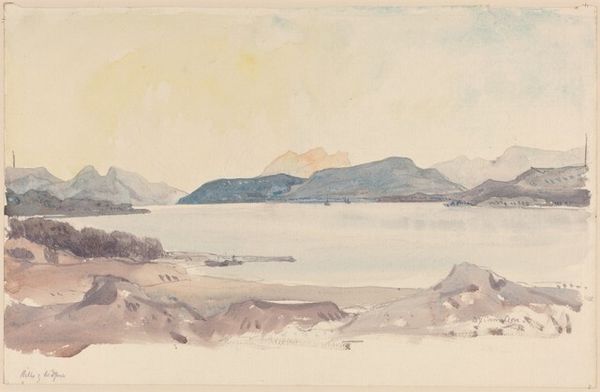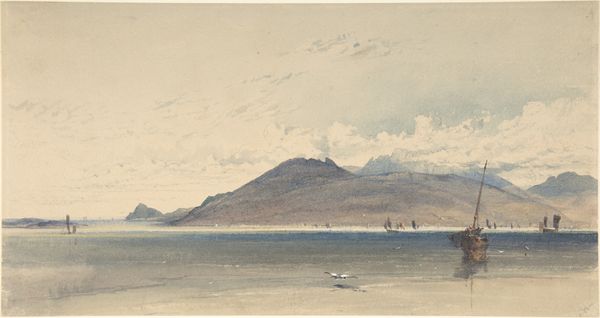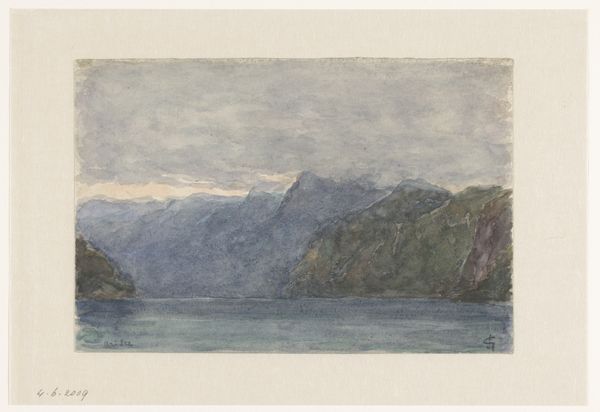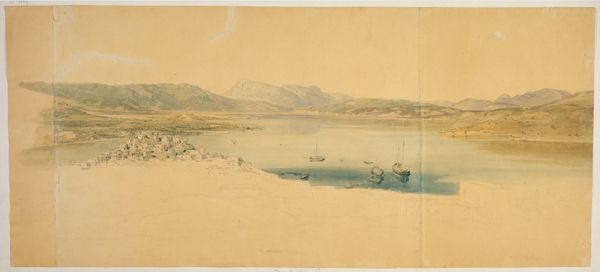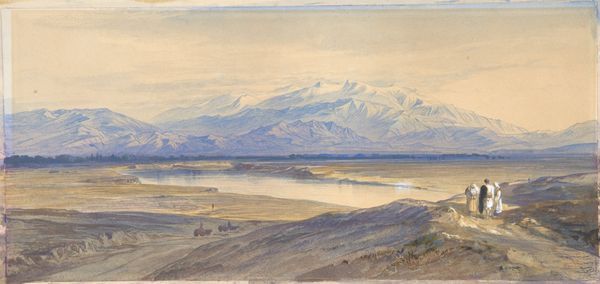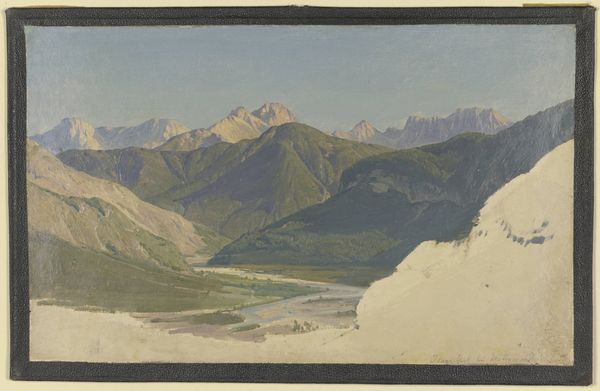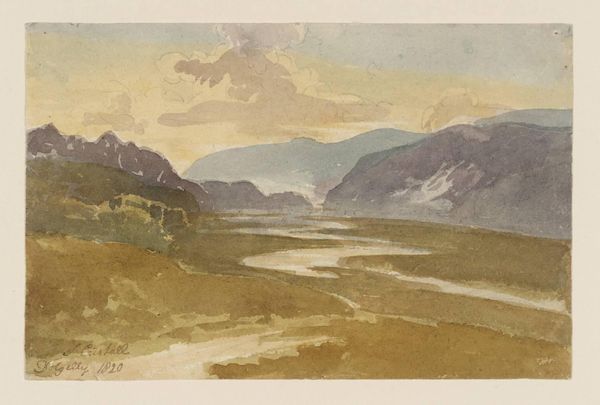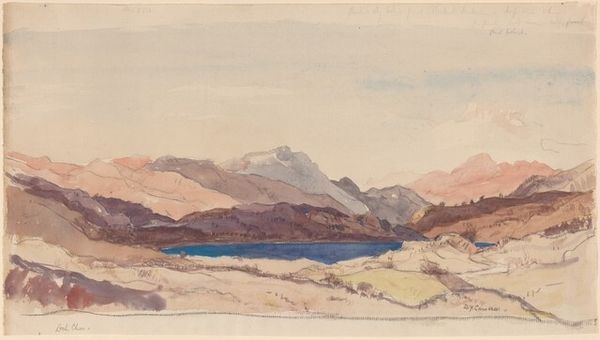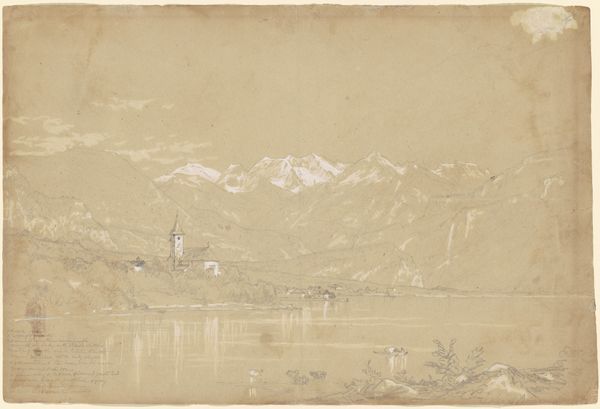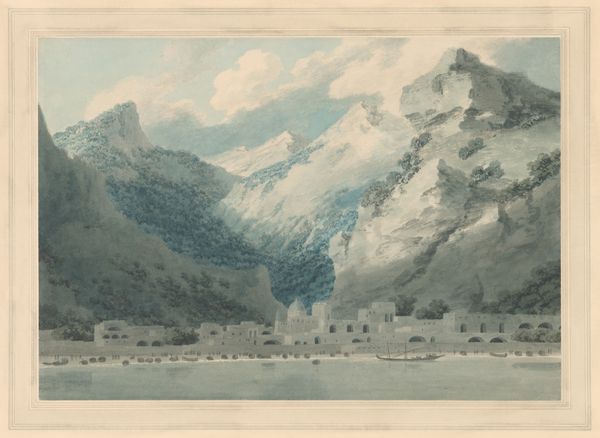
Copyright: Public Domain
Curator: Fritz Hauck’s 1906 watercolor and pencil drawing, “Küste von Feuerland mit Ortschaft, im Hintergrund Hochgebirge,” captures a landscape view of Tierra del Fuego with a settlement nestled against a backdrop of soaring mountains. What's your initial response? Editor: It feels like a captured moment, a quiet stillness right before a storm. The palette is muted, the shapes somewhat hazy. There's an imposing feel in those distant mountains, contrasting with the delicate watercolor rendering. Curator: The contrast resonates, especially if we consider how landscape has often been used as a marker of claiming or discovery, particularly within colonial narratives. The imposing mountains, here, act like a natural monument. Editor: Absolutely. We must read this not simply as a depiction of the "end of the world" – Ushuaia being among the southernmost settlements – but also through a critical lens. What does it mean to depict this landscape in 1906, given the colonial histories already deeply embedded? The smallness of the village is important in relation to the land itself. Curator: It's also striking how Hauck employs watercolor techniques to create a luminous, almost dreamlike quality. You note the muted tones, but those are disrupted by striking contrasts within each element; see how the mountains in the background are both imposing and fragile. The town's delicate portrayal adds to its vulnerability against this stark landscape. Editor: Exactly. The town almost merges into the landscape. Even the boats seem small and easily overwhelmed by the ocean's expanse, which reads to me as a visual metaphor for power dynamics between colonizer and colonized. I wonder about the lives and stories absent from this idyllic yet unsettling depiction. Curator: The interplay of light and shadow, in tandem with a sense of compositional balance, perhaps seeks to instill a sense of harmony between settlement and surrounding nature, to give order to this “discovered” location, obscuring a far more violent and unevenly shared reality. Editor: Ultimately, Hauck's artwork, while beautiful, functions as an invitation to question what remains unseen or unspoken. By considering the art in the time that it was made, we might gain further insight into its greater cultural relevance.
Comments
No comments
Be the first to comment and join the conversation on the ultimate creative platform.
